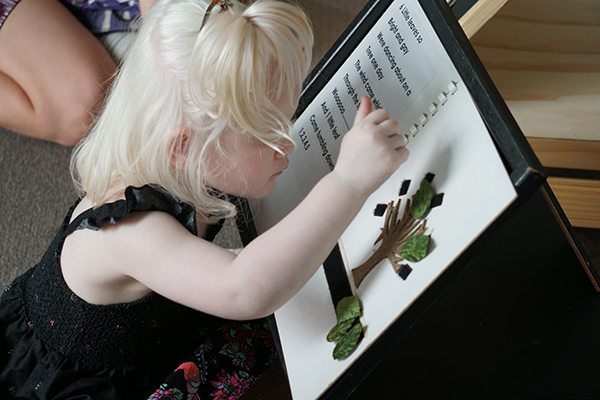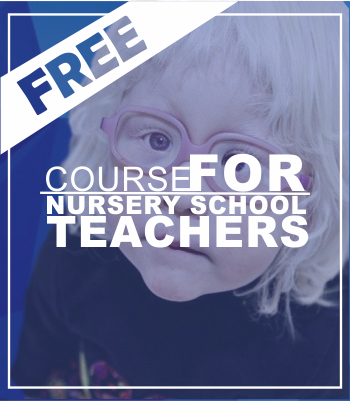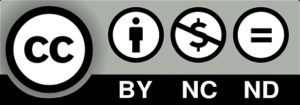CHILDREN WITH VISUAL IMPAIRMENT
The main target groups of this Project are the children with visual impairment in early childhood education, especially those who suffer the rare diseases of Albinism and Aniridia.
These students will receive the greatest impact from the Project, since it will facilitate their educational inclusion so they can learn on equal terms and in the same classrooms as their peers. To this end, the Project will produce a series of resources, tools, and innovative educational methodologies, specifically adapted to the needs of these students, thus facilitating their academic success.
The impact of these results on the first educational stages is essential, because this is when children with SEN begin to suffer their first educational failures, frustrations, and demotivation. Enhancing the educational inclusion of these students since the beginning of their school stage means a great positive impact on their later education, until the completion of their studies.

But to understand what the low vision means, especially when it is a consequence more than a rare disease, we leave this video created by the own young people with albinism thanks to another project of the erasmus plus program
THE ALBINISM
Albinism is a genetic condition that determines a very characteristic phenotype (physical appearance), due to the absence or reduction of pigmentation in the skin, eyes and hair (hypopigmentation).
It is an unusual metabolic condition, due to a defect in the gene that is responsible for the synthesis and distribution of melanin.
Albinism has a low worldwide incidence: one in 20,000 people. It affects all races in the same way. Albino people are characterized by having white or slightly golden hair, very pale or pinkish skin, and violet or reddish blue eyes, although the reddish coloration can be observed when the light affects the eyes, since when there is no pigmentation blood vessels are reflected.
THE ANIRIDIA
Aniridia, meaning “without iris”, is a rare genetic disorder affecting vision, characterised by incomplete formation of the eye iris (the coloured part of the eye that surrounds the black pupil).
It may also cause other parts of the eye to be under-developed such as the optic nerve and the macula (the central part of the retina).
People with aniridia may also develop other eye conditions. Aniridia and these associated conditions affect everyone differently. So while some people with aniridia are partially sighted or blind, others may have near normal sight.
TEACHERS OF CHILDHOOD EDUCATION
One of the main beneficiary groups of the project are the nursery schools of the participating countries and their teachers. These teachers will find new innovative learning methodologies adapted to students with visual disabilities in the results of the project, through specific educational tools for the inclusion of students under 6 years old with serious visual impairment in their classrooms, thus being able to turn their ordinary classrooms into inclusive classrooms.

PARTICIPATING ORGANIZATIONS
The entities involved have
different and complementary profiles, but they all share the defense and work
towards an inclusive education adapted to students with special needs, which is
why the exchange of successful experiences among them is having such a relevant
impact.
Also, this project provides them with greater internationalization, European
renown, and the capability to promote educational skills. The entities of
persons with Aniridia, who participate for the first time in Erasmus Plus, are
receiving an even more important impact, as they are also improving their work,
cooperation, and collaboration networks at the European level. There is also a
very significant impact on the improvement of the services offered to their
partners, which are the main beneficiaries of the Project.
Once the Intellectual Outputs are finished, the impact will be much greater
because the quality of their services will increase, providing them with very
innovative intersectorial tools, materials, educational tools, and
methodologies to improve educational inclusion
PARTICIPANTS
The direct participants of
the Project are mainly trainers and leaders of the partner organizations, some
of them being people with Aniridia or Albinism and therefore with visual
impairment. The Project is having an important impact in these participants on
the development of their capabilities, especially communication, foreign
language skills, and digital skills. They are also being trained to develop new
innovative learning methodologies adapted to students with visual impairment,
and they are increasing their experience in managing European projects through
the exchange of experiences and good practices among partners.
Students with aniridia, albinism and other visual disabilities are also
participants of the project, and the main beneficiaries or target groups. They
will be especially involved in the pilot tests of the Intellectual Outputs and
in the dissemination activities of the project, which is why this project has a
very relevant impact on these participants, but it will become much more
important once its results are finished.
OTHER BENEFICIARIES
This project has multiple non-formal partners that will also perceive a great impact. These are schools and organizations of childhood and primary education, associations of people with albinism and aniridia from other European countries, public administrations, trainers, educators, and teachers. All of them will receive new educational tools, materials, and methodologies adapted to the SSNN of students with visual disabilities to improve their inclusion. So far, these organizations have already been contacted, the project has been made known to them, and they have shown their interest in participating in testing the materials to ensure these do really answer to the needs of students with visual impairment.


